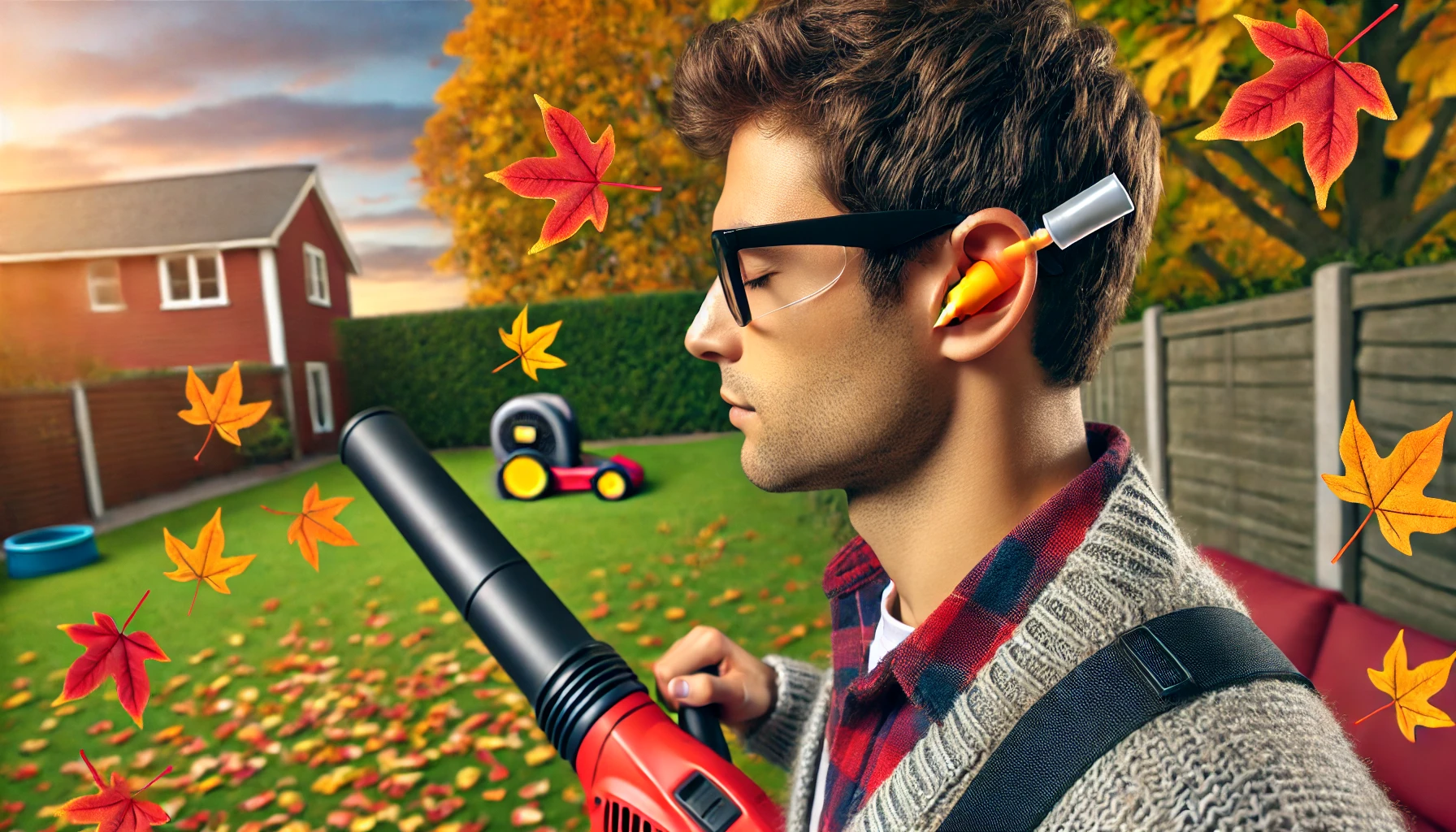Imagine you’re out in your yard, enjoying a beautiful day, when the leaves start piling up. Naturally, you grab your trusty leaf blower, but then a thought hits you—can you use a leaf blower with Eustachian Tube Dysfunction (ETD)? It’s a question many people with ETD might not consider until it’s too late. This blog post will shed some light on this issue, offering insights and practical advice for those who want to keep their yard tidy without compromising their ear health.
What is Eustachian Tube Dysfunction (ETD)?
Eustachian Tube Dysfunction sounds like a complicated medical term, but it simply refers to a condition where the Eustachian tubes in your ears don’t function as they should. These tubes are responsible for regulating air pressure and draining fluids from the middle ear. When they’re not working correctly, it can lead to a feeling of fullness, discomfort, and even hearing loss. And let’s be honest, no one wants to feel like they’re living underwater—unless you’re a mermaid, of course!
How ETD Affects Daily Life
Living with ETD can feel like you’re navigating life with a muffled soundtrack. It affects not only your hearing but also your balance and overall comfort. Everyday tasks, like flying or driving up a mountain, can become challenging. Understanding how ETD impacts your daily activities is crucial, especially when deciding whether to use noisy, vibrating tools like a leaf blower.
The Potential Risks of Using a Leaf Blower with ETD
Noise and Pressure Concerns
Let’s get one thing straight: leaf blowers are LOUD. These machines can easily reach decibel levels that are harmful to even healthy ears. For someone with ETD, the loud noise can exacerbate symptoms, causing increased pressure in the ears. Think of it as trying to pop your ears on an airplane but instead, you’re in your own backyard. The sudden changes in pressure might make your ears feel even more blocked, turning a simple chore into a frustrating ordeal.
Vibration and Physical Strain
Aside from the noise, the vibration from a leaf blower can also pose a problem. The shaking and physical strain might not seem like a big deal, but for those with ETD, it can lead to increased discomfort. Imagine trying to balance on a tightrope while someone’s shaking the rope—it’s not fun, and it’s definitely not safe. The vibrations could potentially worsen the dysfunction, leaving you with more than just a clean yard to deal with.
Precautions and Safety Tips
Hearing Protection
So, you’ve decided to brave the leaf blower despite your ETD. First things first—protect those ears! Using earplugs or noise-canceling headphones can help reduce the risk of aggravating your condition. Opt for ear protection that’s comfortable and designed to block out harmful levels of noise. It’s like giving your ears a cozy little blanket of protection—who wouldn’t want that?
Proper Usage Techniques
Using a leaf blower doesn’t have to be a high-stakes game. By employing some proper techniques, you can minimize the risks. Hold the blower at a comfortable distance, avoid prolonged exposure, and take frequent breaks. It’s all about balance—both for your yard and your ears. And remember, if it starts to feel uncomfortable, it’s okay to put the blower down and take a breather.
Alternatives to Leaf Blowers
Let’s not forget that there are quieter, less aggressive options available. If using a leaf blower feels like too much of a risk, consider using a rake. It might take a little longer, but it’s gentle on your ears and gives you a nice workout—talk about killing two birds with one stone! Plus, your neighbors will probably appreciate the quieter approach.
When to Avoid Using a Leaf Blower
If your ETD symptoms are flaring up—such as severe ear fullness, pain, or dizziness—it’s best to steer clear of the leaf blower. Why risk making things worse? Listen to your body (and your ears) and give yourself a break when needed. Sometimes, a messy yard is better than a week of ear discomfort.
Before you dive into any potentially ear-damaging activity, it’s wise to consult with a healthcare professional. They can provide personalized advice based on your specific condition. An ENT specialist might even suggest alternative methods or recommend hearing protection that’s tailored to your needs. Remember, it’s better to be safe than sorry—especially when it comes to your ears.
Real-Life Experiences
People with ETD have shared mixed experiences with using leaf blowers. Some find that wearing proper hearing protection makes all the difference, while others prefer to avoid them altogether. Listening to real-life experiences can provide valuable insights and help you make an informed decision. After all, it’s always good to learn from others—why reinvent the wheel?
Online forums and support groups are great places to connect with others who have ETD. You can find tips, recommendations, and even a bit of moral support. Whether it’s advice on the best earplugs or suggestions for alternative yard tools, the ETD community is there to help. Plus, it’s nice to know you’re not alone in dealing with this tricky condition.
Conclusion
Using a leaf blower with Eustachian Tube Dysfunction is possible, but it comes with risks. By understanding the potential dangers, taking proper precautions, and listening to your body, you can make a more informed decision about whether or not to fire up that leaf blower.
Ultimately, your health and comfort should come first. A tidy yard is great, but it’s not worth the cost of your well-being. Whether you choose to use a leaf blower, opt for a rake, or hire someone to do the job, make sure your ears are happy with your decision.
FAQs
Can using a leaf blower worsen ETD?
Yes, the loud noise and vibrations can potentially worsen ETD symptoms. It’s important to take precautions or consider alternative methods.
What are some quieter alternatives to leaf blowers?
Manual tools like rakes or electric leaf vacuums are quieter options that can be gentler on your ears.
Is it safe to use earplugs with ETD while using loud equipment?
Yes, earplugs or noise-canceling headphones can help protect your ears, but it’s always best to consult with a healthcare professional first.





